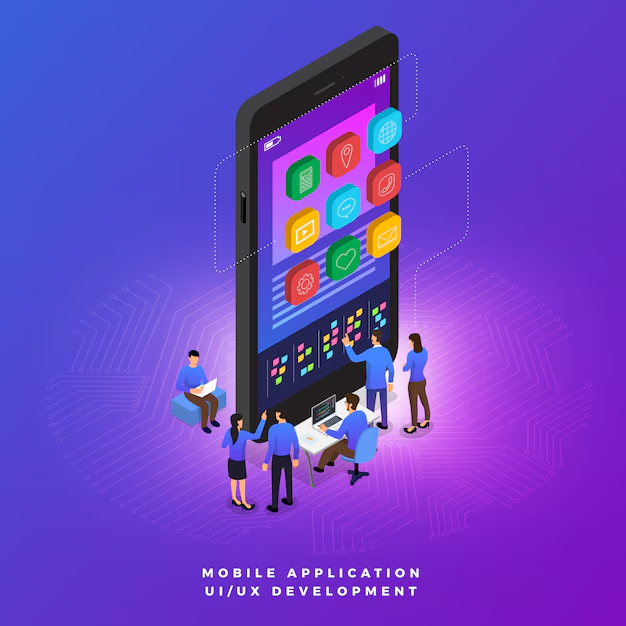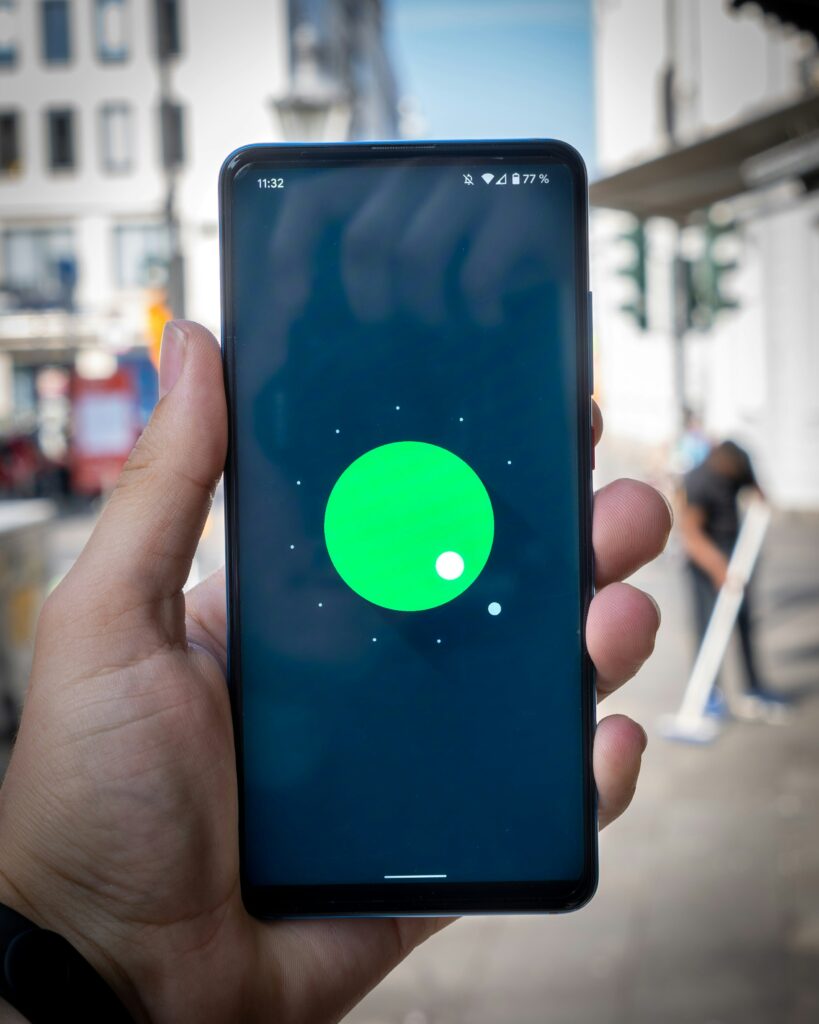Embarking on a journey to become an Android app developer is both exciting and rewarding, especially with the right resources at your disposal. An Android development full course offers a comprehensive pathway for anyone eager to dive into the world of mobile applications. Whether you’re a complete beginner or looking to enhance your existing skills, this course is tailored to meet your needs.
One of the most appealing aspects of this Android development full course is that it often comes with certification upon completion. This certification not only validates your skills but also enhances your resume, making you more attractive in the competitive job market. Employers today are on the lookout for candidates who possess practical experience and recognized qualifications, and completing an Android development course with certification can give you that edge.
What’s more, many platforms offer free access to high-quality content that covers everything from the fundamentals of Java programming—an essential skill for any aspiring Android developer—to advanced concepts like integrating APIs and utilizing databases. Learning through these free resources allows you to explore various aspects of Android app development without any financial commitment.
Throughout the course, you’ll engage in hands-on projects that will help solidify your understanding of key concepts. You’ll learn how to design user-friendly interfaces, implement functionalities using Kotlin or Java, and test applications effectively—all crucial skills for any successful Android app developer.
The course curriculum often starts with the basics, such as setting up Android Studio, understanding the Android development lifecycle, and creating your first app. This Is initial stage is crucial for building a strong foundation. Once you’re comfortable with the basics, the course will typically guide you through more advanced topics such as:

User Interface (UI) Design:
Mastering XML for designing layouts
Implementing Material Design principles for intuitive and aesthetic interfaces
Programming Fundamentals:
Java basics, including object-oriented programming (OOP) concepts
Kotlin programming for modern Android development
Data Handling:
Working with SQLite databases
Using Room Persistence Library for efficient data storage
Networking and APIs:
Fetching data from remote servers using REST APIs
Parsing JSON data and integrating it into applications
Advanced Features:
Implementing push notifications with Firebase Cloud Messaging
Integrating third-party libraries for enhanced functionality
Testing and Debugging:
Writing unit tests and UI tests
Debugging common issues using Android Studio’s tools

Publishing to Google Play:
Preparing your app for release
Understanding the guidelines and best practices for publishing.
Android development full course is an ever-evolving field with a wide array of tools, frameworks, and best practices. This roadmap provides a structured guide for anyone aspiring to become a proficient Android developer. It is divided into key phases, from foundational knowledge to advanced topics.
1. Understanding the Basics
Before diving into Android development, it is crucial to understand fundamental programming concepts and tools. This phase ensures you have a solid foundation to build upon.
a. Programming Languages
Java: Originally the primary language for Android development, Java remains highly relevant.
Learn object-oriented programming (OOP) principles.
Understand concepts like classes, inheritance, polymorphism, and exception handling.
Kotlin: The preferred language for modern Android development.
Study null safety, extension functions, coroutines, and functional programming features.
b. Version Control
Learn Git for source control.
Understand basic commands like git init, clone, add, commit, push, and pull.
Familiarize yourself with platforms like GitHub, GitLab, or Bitbucket.
c. Development Tools
Install Android Studio, the official Integrated Development Environment (IDE) for Android.
Learn to navigate its features, such as the Layout Editor, Logcat, and Gradle Build System.
Familiarize yourself with the Android Emulator for testing applications.
2. Android Fundamentals
Once you have the basics, the next step is understanding the core components of Android development.
a. Android Architecture
Learn the Android architecture components:
Activities: Entry points for user interaction.
Fragments: Reusable portions of the UI.
Services: Background tasks.
Broadcast Receivers: System-wide event listeners.
Content Providers: Manage and share app data.
b. Android Manifest
Understand the role of the AndroidManifest.xml file.
Declaring activities, services, and permissions.
c. User Interface (UI) Design
Learn XML for designing layouts.
Study common UI components:
TextView, EditText, Button, RecyclerView, etc.
Understand ViewGroups like LinearLayout, ConstraintLayout, and RelativeLayout.
Explore Material Design principles for modern UI.
d. Intents and Navigation
Work with explicit and implicit intents to navigate between activities or interact with other apps.
Study modern navigation components like the Navigation Component.
e. Resources and Assets
Manage resources (strings, colors, dimensions, and styles) in the res folder.
Handle assets like images and fonts efficiently.
3. Intermediate Android Development
After mastering the basics, dive deeper into Android development full course concepts to create more complex and robust applications.
a. Data Storage
Explore different storage options:
SharedPreferences: Store simple key-value pairs.
Internal/External Storage: Save files.
SQLite Database: Manage structured data.
Room Database: A modern database library built on SQLite.
b. Networking
Understand how to work with APIs and fetch data.
Use libraries like Retrofit or Volley for network requests.
Learn about JSON parsing and data binding.
c. Dependency Injection (DI)
Study dependency injection frameworks like Dagger or Hilt to improve code modularity and testability.
d. Lifecycle Management
Master the Android lifecycle and how to manage it effectively.
Use ViewModel and LiveData to handle lifecycle-aware components.
e. Multithreading and Coroutines
Learn about threads and asynchronous programming.
Use AsyncTask (deprecated but important historically).
Prefer Kotlin Coroutines for modern, simpler threading.
f. Advanced UI Design
Implement complex UI components like:
ViewPager, TabLayout, and custom views.
Animations (Property Animations, MotionLayout).
4. Advanced Android Development
This phase focuses on advanced topics, optimization, and best practices.
a. Architecture Patterns
Implement modern architecture patterns for scalability and maintainability:
MVC (Model-View-Controller)
MVP (Model-View-Presenter)
MVVM (Model-View-ViewModel)
Use Clean Architecture for a more structured approach.
b. Jetpack Components
Explore Jetpack libraries to reduce boilerplate code and improve productivity:
WorkManager: Handle background tasks.
Paging: Efficiently load large datasets.
Navigation Component: Simplify navigation.
DataStore: Modern alternative to SharedPreferences.
c. Testing
Write unit tests and UI tests to ensure app reliability.
Use frameworks like JUnit, Mockito, and Espresso.
d. Performance Optimization
Optimize app performance by:
Reducing memory leaks using LeakCanary.
Profiling apps with Android Profiler.
Lazy loading data and optimizing layouts.
e. Publishing
Prepare your app for publishing:
Test thoroughly for crashes and edge cases.
Generate signed APKs or App Bundles.
Submit your app to the Google Play Store following their guidelines.
5. Specialization and Continuous Learning
Android development is a dynamic field. Continuous learning and specialization are essential to stay relevant.
a. Specialized Topics
Wear OS Development: Build apps for smartwatches.
TV and Automotive: Develop for Android TV or Android Auto.
Game Development: Use Unity or Unreal Engine with Android.
Augmented Reality (AR): Work with ARCore.
b. Third-Party Libraries
Learn popular libraries to enhance productivity:
Glide/Picasso: Image loading.
Lottie: Animations.
ExoPlayer: Media playback.
c. Cloud Integration
Integrate your app with cloud services:
Use Firebase for real-time databases, authentication, and push notifications.
Work with Google Cloud Platform or AWS for backend services.
d. Keeping Up with Trends
Follow official Android blogs and attend conferences.
Google I/O.
Online platforms .
Participate in developer communities such as Stack Overflow and Reddit.
6. Building a Portfolio
To showcase your skills and attract opportunities, build a strong portfolio.
a. Personal Projects
Create projects demonstrating various skills:
A to-do list app with Room and LiveData.
A weather app fetching data from an API.
A media player using ExoPlayer.
b. Open Source Contributions
Contribute to open-source projects on GitHub.
Collaborate with other developers.
Learn best practices from real-world projects.
c. Publish Apps
Publish your apps to the Google Play Store.
Gain experience with app maintenance and updates.
7. Soft Skills and Career Growth
In addition to technical skills, soft skills play a critical role in career growth.
a. Communication
Collaborate effectively with team members and stakeholders.
Document your code and write clear commit messages.
b. Problem-Solving
Develop analytical thinking to debug and optimize your apps.
c. Time Management
Prioritize tasks and manage deadlines effectively.
d. Networking
Connect with professionals in the Android community.
Attend meetups and contribute to online discussions.
Industry Certifications in Android Development full Course
Our course prepares you for industry-recognized certifications.

Google Associate Android Developer Certification:
Gain the skills necessary to earn this certification, which boosts your job prospects.
Certification Benefits:
Certifications help validate your skills and increase your credibility in the tech industry.
Post-Course Opportunities in Android App Development Course
After completing the course, you’ll be ready to pursue various career paths and opportunities.
Internships:
Gain real-world experience with potential internships.
Freelancing: Build your career by offering your services as a freelance Android app developer.
Advanced Learning:
Explore specialized courses like game development, enterprise apps, or Android for wearables.
Each of these modules includes practical assignments that mirror real-world challenges. For example, you might create a weather app that fetches live data from an API or build a simple e-commerce application with user authentication and payment integration.
Another significant aspect of an Android development course is the community support it provides. Many courses include forums or Slack groups where you can interact with fellow learners and instructors. This sense of community can be invaluable when you encounter challenges or need feedback on your projects.
As technology continues to evolve rapidly, staying updated with current trends in Android development becomes imperative. A well-structured full course not only teaches you foundational knowledge but also prepares you for future advancements in mobile technology. Topics like Jetpack Compose for modern UI development, the use of Coroutines for managing asynchronous tasks, and integrating AI-powered tools are increasingly becoming part of advanced Android courses.
Moreover, the demand for Android developers remains high across industries. From startups to multinational corporations, businesses are constantly seeking skilled developers to create innovative apps that meet their needs. By mastering Android development, you open doors to numerous career opportunities, whether as a freelancer, a part of a development team, or even the founder of your own app-based business.
Flexible Learning Options
If you’re looking for flexibility, many online platforms offer self-paced courses, allowing you to learn at your own convenience. Other Platforms provide a variety of Android development courses—some even offered by industry leaders like Google. Additionally, YouTube is a treasure trove of free tutorials that cater to learners of all levels.
For those who prefer a more structured learning environment, coding bootcamps and university programs can provide intensive, instructor-led training. These programs often include career support, such as resume reviews and interview preparation, further increasing your chances of landing a desirable job.
Build a Strong Portfolio
As you progress through your Android development course journey, you will be considered building a portfolio to showcase your skills. A portfolio is a tangible demonstration of your abilities and serves as a powerful tool during job interviews. Include a variety of projects that highlight different aspects of your expertise, such as UI design, API integration, and performance optimization.
Conclusion:
If you’re serious about pursuing a career in mobile application development or simply want to enhance your skill set, enrolling in an Android app development course is a wise investment in your future. With free options available alongside comprehensive learning paths leading to certification, there’s no better time than now to start learning Android development. The skills you acquire will not only empower you to create innovative apps but also position you for success in the dynamic field of mobile technology.
By Hitesh.S

Join today and get access to exclusive deals and premium learning materials!
